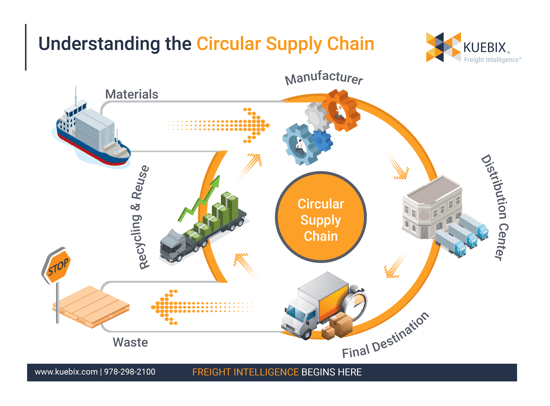A circular supply chain involves a company reusing or repurposing waste and customer returns to convert those into new or refurbished products. A circular supply chain aims to minimize the use of raw materials and minimize discarded waste materials. Because of this reuse, unlike the traditional linear supply chain model, the circular supply chain does not stop at the customer but rather moves in a continuous cycle. With sustainability a greater concern than ever for businesses and customers, many companies are shifting to a circular supply chain. There are variations on circular supply chain models, but the philosophy of minimizing waste and environmental impact are consistent throughout companies who use them.
Circular supply chain examples
A number of businesses have already implemented circular supply chain models of their own. The more general example of a circular supply chain, though, is not unlike the linear supply chain, but for the addition of a reuse/recycling component that connects what used to be the end (the consumer & waste) back to what used to be the beginning (materials). Here's an illustration of a circular supply chain from Kuebix:

Everything from materials to final destination is typical of a traditional linear supply chain, but rather than discarding the waste at the end, and starting back at the beginning, the waste (as well as customer returns) connect that endpoint back to the starting line, cutting down on the need for raw materials.
A more customized circular supply chain example comes from Accenture, specifically dealing with agriculture. In this example, consumers can directly reward producers for their sustainability efforts with influence from digital identity, payments and blockchain. Here's an illustration from Inbound Logistics:

There are plenty of other versions of circular supply chains out there, with Amazon representing a particularly well-known one, but in the end, just about any company can implement a version of a circular supply chain for themselves. Just remember, the emphasis is always on sustainability and conserving resources.
If you're ready to take the next step, at InTek Freight & Logistics, we can help. Just tell us what you need and we'll discuss how our expertise can help with the unique shipping challenges your business faces. Rather do a bit more research first? View our Freight Guides for comprehensive articles and eBooks on all things freight and logistics.